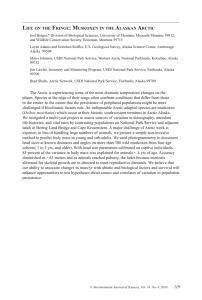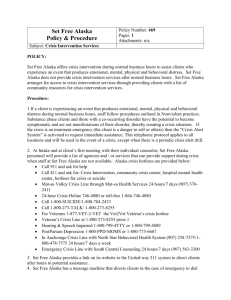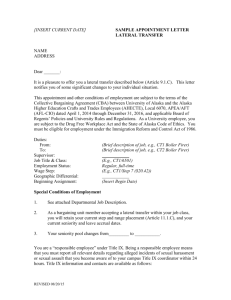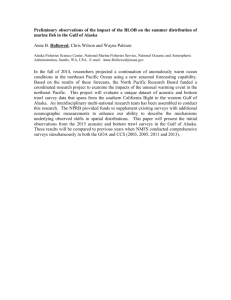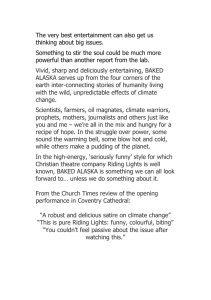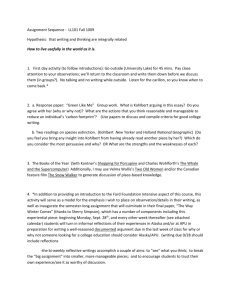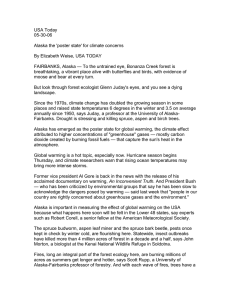Alaska HCR30 Fact Sheet
advertisement
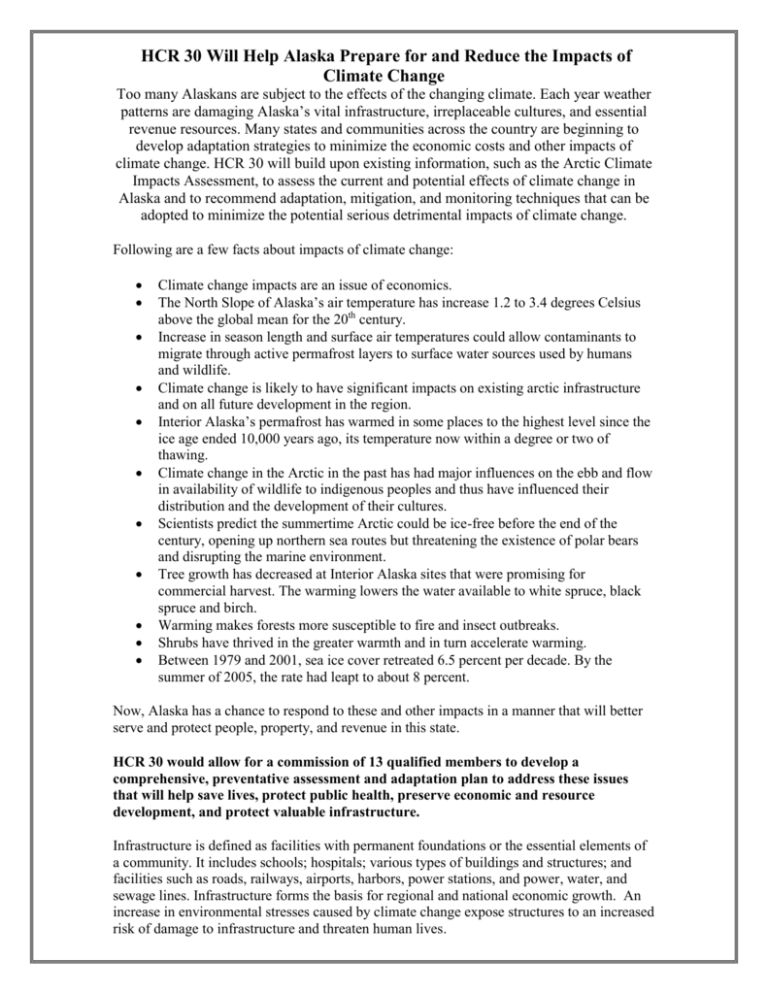
HCR 30 Will Help Alaska Prepare for and Reduce the Impacts of Climate Change Too many Alaskans are subject to the effects of the changing climate. Each year weather patterns are damaging Alaska’s vital infrastructure, irreplaceable cultures, and essential revenue resources. Many states and communities across the country are beginning to develop adaptation strategies to minimize the economic costs and other impacts of climate change. HCR 30 will build upon existing information, such as the Arctic Climate Impacts Assessment, to assess the current and potential effects of climate change in Alaska and to recommend adaptation, mitigation, and monitoring techniques that can be adopted to minimize the potential serious detrimental impacts of climate change. Following are a few facts about impacts of climate change: Climate change impacts are an issue of economics. The North Slope of Alaska’s air temperature has increase 1.2 to 3.4 degrees Celsius above the global mean for the 20th century. Increase in season length and surface air temperatures could allow contaminants to migrate through active permafrost layers to surface water sources used by humans and wildlife. Climate change is likely to have significant impacts on existing arctic infrastructure and on all future development in the region. Interior Alaska’s permafrost has warmed in some places to the highest level since the ice age ended 10,000 years ago, its temperature now within a degree or two of thawing. Climate change in the Arctic in the past has had major influences on the ebb and flow in availability of wildlife to indigenous peoples and thus have influenced their distribution and the development of their cultures. Scientists predict the summertime Arctic could be ice-free before the end of the century, opening up northern sea routes but threatening the existence of polar bears and disrupting the marine environment. Tree growth has decreased at Interior Alaska sites that were promising for commercial harvest. The warming lowers the water available to white spruce, black spruce and birch. Warming makes forests more susceptible to fire and insect outbreaks. Shrubs have thrived in the greater warmth and in turn accelerate warming. Between 1979 and 2001, sea ice cover retreated 6.5 percent per decade. By the summer of 2005, the rate had leapt to about 8 percent. Now, Alaska has a chance to respond to these and other impacts in a manner that will better serve and protect people, property, and revenue in this state. HCR 30 would allow for a commission of 13 qualified members to develop a comprehensive, preventative assessment and adaptation plan to address these issues that will help save lives, protect public health, preserve economic and resource development, and protect valuable infrastructure. Infrastructure is defined as facilities with permanent foundations or the essential elements of a community. It includes schools; hospitals; various types of buildings and structures; and facilities such as roads, railways, airports, harbors, power stations, and power, water, and sewage lines. Infrastructure forms the basis for regional and national economic growth. An increase in environmental stresses caused by climate change expose structures to an increased risk of damage to infrastructure and threaten human lives. How can the Alaska Impact Assessment Commission make a difference? The Alaska Impact Assessment Commission will make a difference by formulating methods to identify problem areas, estimating costs and opportunities, developing strategies to address emergency situations, and provide solid advice to the legislature as well as the communities in the state. Areas in which climate change effects: Arctic Tundra and Polar Desert Ecosystems Freshwater Ecosystems, Fisheries, and Marine Systems Wildlife Hunting, Herding, Fishing, and Gathering Forestry, Land Management, and Agriculture Human Health Infrastructure: Buildings, Support Systems, and Industrial Facilities Alaska HCR 30 Will Help Prevent And Prepare for the Impacts of Climate Change Alaska is not the only state that feels the impacts of climate change. Delaying action until we have a greater certainty could be disastrous. The scientific understanding of climate change is now sufficiently clear to justify nations taking prompt action. The key is to integrate science and policy. Following are a few facts and theories about impacts of climate change: The earth’s temperature will keep rising, somewhere between 1.5 and nearly 6 degrees C by 2100. A global shift of 6 degrees C downward would make the difference between our current climate and an ice age. Impacts on sea level alone will impact half or more of the world’s population who live in the coastal areas. More than a third of the U.S. coastal wetlands could be lost. The average global temperature has risen since the mid-19th century, by 0.6 degree C (roughly 1 degree F), and the amount of carbon dioxide in the atmosphere has increased about 30 percent from preindustrial times. Carbon dioxide and methane trap enough energy on earth to warm the surface up about 33 degrees C, higher than it would be in their absence. CO2 can retard plant growth instead of increasing it and reduce the diversity of plant species. Climate change prompts genetic change, making some animal species more vulnerable to extinction. Impacts include the sea level rising as much as 34 inches; increase in precipitation; threats to human health; and loss of life from floods and storms. Harmful effects may be occurring in the West: record dry spells, millions of acres of dead forests, warmer winters, dwindling water and catastrophic wildfires. Canada’s Mackenzie Valley pipeline is being threatened by climate change and the impact on the permafrost. States taking initiative: Montana – a climate change advisory board to come up with recommendations by July 2007 to cut greenhouse gases. Arizona – climate change panel will report by June 30. Oregon - plans to adopt limits on power plant emissions. Washington – plans to adopt limits on auto tailpipe emissions. California – has a “climate action team” due to report in June on finding ways to cut emissions 2010, with further reductions by 2020. New Mexico – has set targets for cutting greenhouse emissions and has asked a climate team to recommend by December how to make the cuts.


